
Ceratosoma amoenum, or the clown nudibranch, is a species of colorful dorid nudibranch, a sea slug, a shell-less marine gastropod mollusk in the family Chromodorididae.
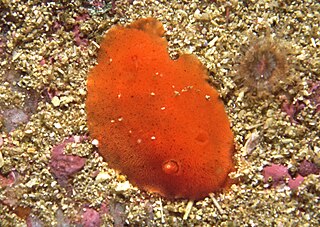
Rostanga elandsia, is a species of dorid nudibranch. It is a marine gastropod mollusc in the family Discodorididae.

The Cape dorid is a species of sea slug, a dorid nudibranch. It is a marine gastropod mollusc in the family Chromodorididae.

Aldisa cooperi is a species of sea slug, a dorid nudibranch, a marine gastropod mollusc in the family Cadlinidae.

Clathrina coriacea is a species of calcareous sponge belonging to the class Calcarea and family Clathrinidae. Species in the genus Clathrina are composed of calcium carbonate tube-like skeletons containing spicules. The sponge can be located in shallow waters widely distributed along North Atlantic coasts, as well as on other coasts.
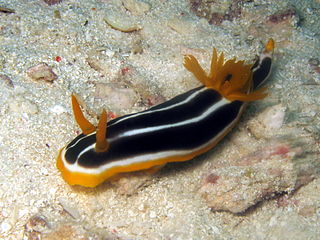
Chromodoris africana, or four-coloured nudibranch, is a species of colourful sea slug, a dorid nudibranch, a marine gastropod mollusc in the family Chromodorididae.

The orange wall sponge is a species of sea sponge belonging to the order Trachycladida. It is found in the south Atlantic and Indo-Pacific oceans. Around the South African coast, it is known from the Cape Peninsula to Cape Agulhas.
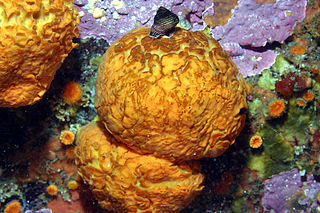
Tethya aurantium, also known as the golf ball sponge or orange puffball sponge, is a species of sea sponge belonging to the family Tethyidae. It is spherical in shape, with a warty surface, and grows to about 10 cm in diameter. Oscula are present on the upper surface. The surface has sharp protruding spicules which can cause skin irritation if touched.
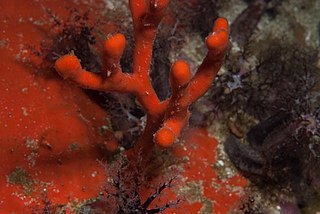
The tree sponge is a species of demosponge. It is known from the west coast of South Africa to Cape Agulhas. It is endemic to this region.
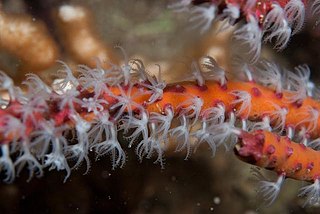
The gorgonian twig coral is a species of gorgonian sea fan in the family Anthothelidae.

Sabella spallanzanii is a species of marine polychaete worms in the family Sabellidae. Common names include the Mediterranean fanworm, the feather duster worm, the European fan worm and the pencil worm. It is native to shallow waters in the northeastern Atlantic Ocean and the Mediterranean Sea. It has spread to various other parts of the world and is included on the Global Invasive Species Database maintained by the IUCN.

Geodia barretti is a massive deep-sea sponge species found in the boreal waters of the North Atlantic Ocean, and is fairly common on the coasts of Norway and Sweden. It is a dominant species in boreal sponge grounds. Supported by morphology and molecular data, this species is classified in the family Geodiidae.

Clathria prolifera, commonly known as red beard sponge, is a species of sea sponge in the family Microcionidae. It is native to shallow water habitats in the western Atlantic Ocean from Prince Edward Island southwards to Florida and Mexico, and possibly Brazil. In the twentieth century it also became established on the west coast of the United States.
The Jutten Island Marine Protected Area is an inshore conservation region in the territorial waters of South Africa in Saldanha Bay, in the Western Cape.
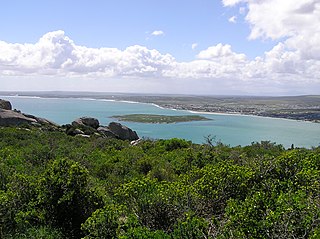
The Langebaan Lagoon Marine Protected Area is an inshore conservation region in the territorial waters of South Africa.
The Malgas Island Marine Protected Area is an inshore conservation region encompassing Malgas Island, in the territorial waters of South Africa at the entrance to Saldanha Bay on the west coast of the Western Cape province.
Fibulia ramosa, or the columnar sponge, is a species of deep-sea demosponge from the southern hemisphere.
Clathria pachystyla, the orange finger sponge, is a species of demosponge from the coast of South Africa.
Clathria lissoclada, the triangular blade sponge, is a species of demosponge from the southern hemisphere.













